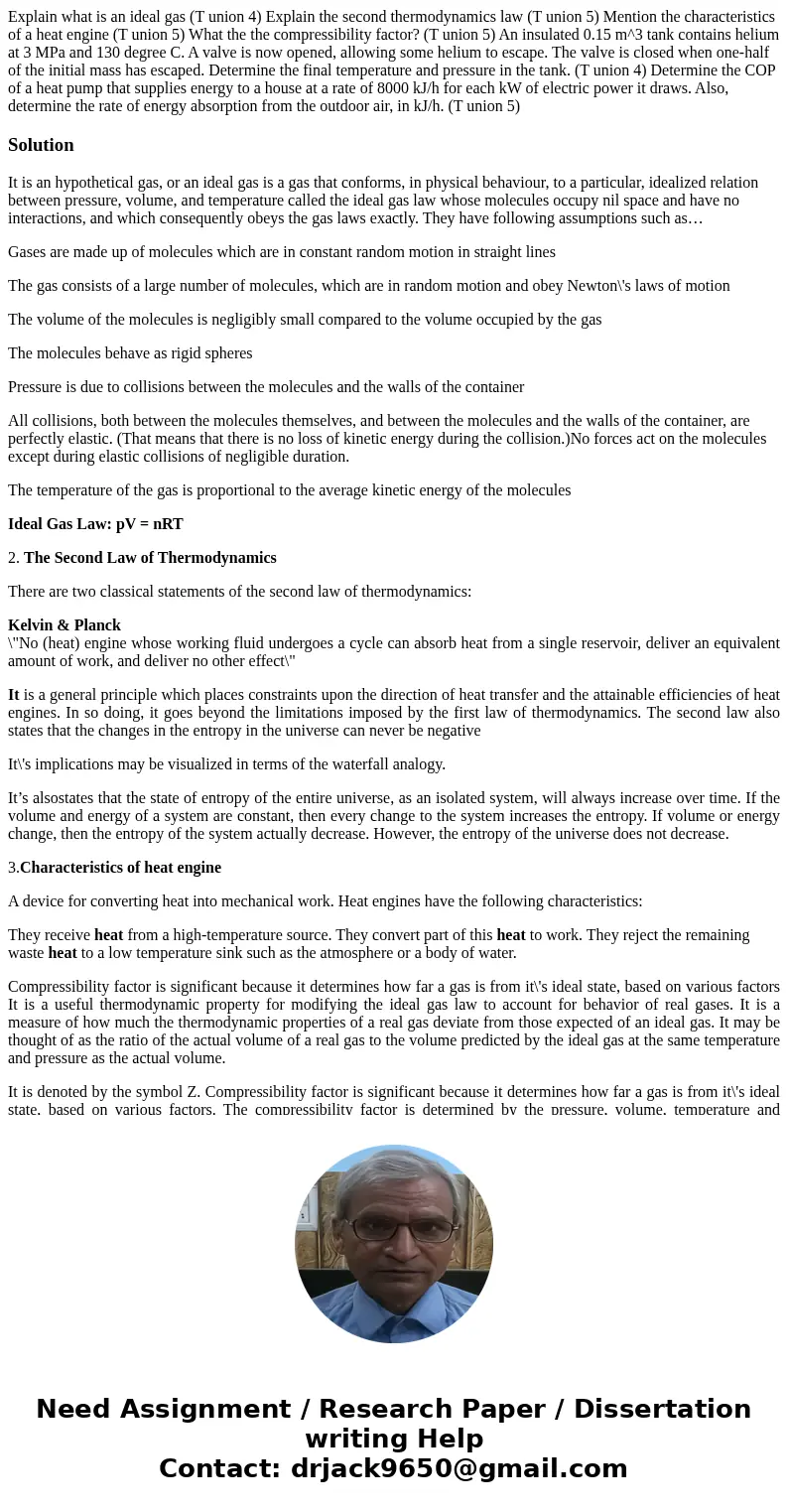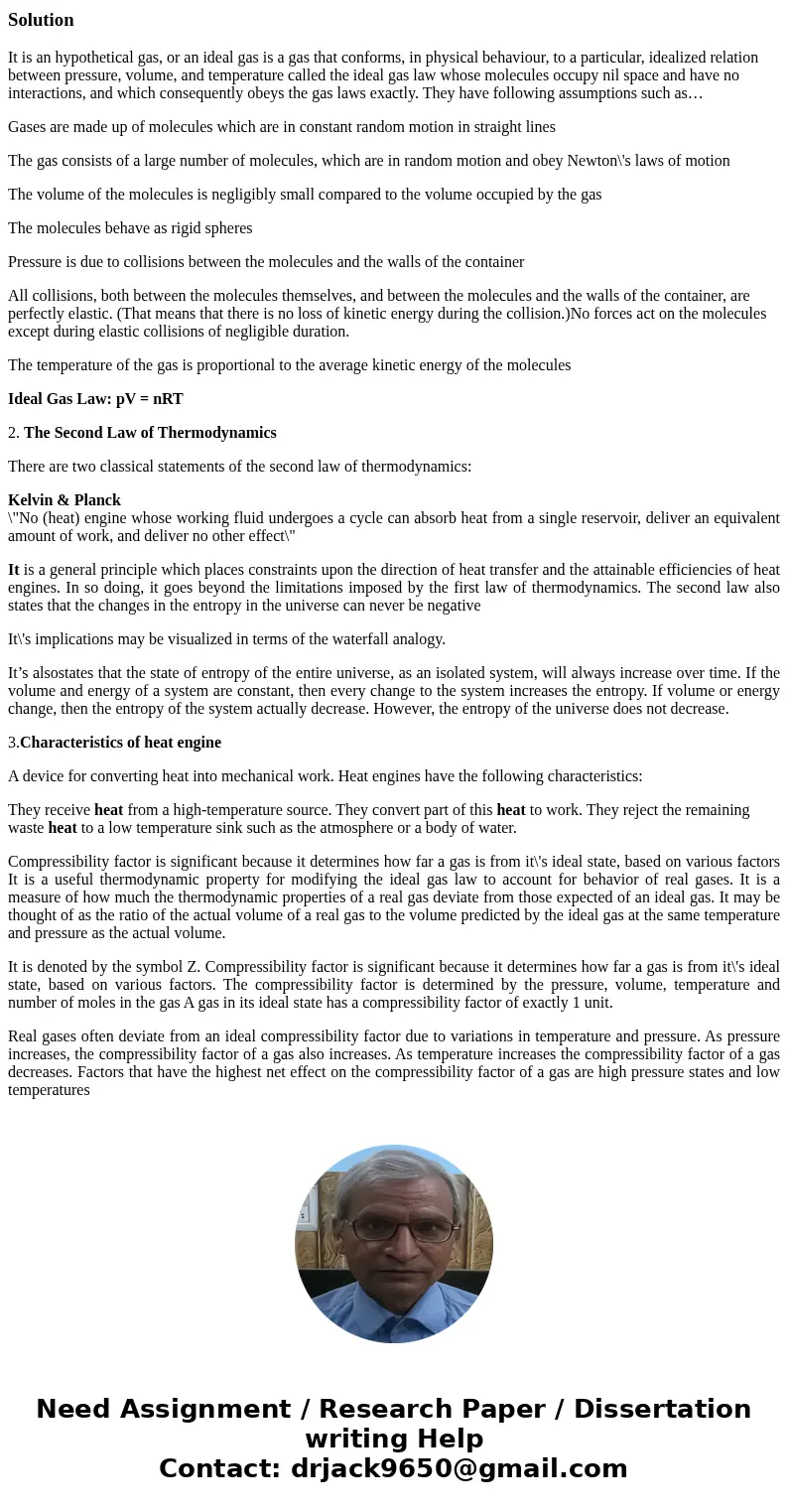Explain what is an ideal gas T union 4 Explain the second th
Solution
It is an hypothetical gas, or an ideal gas is a gas that conforms, in physical behaviour, to a particular, idealized relation between pressure, volume, and temperature called the ideal gas law whose molecules occupy nil space and have no interactions, and which consequently obeys the gas laws exactly. They have following assumptions such as…
Gases are made up of molecules which are in constant random motion in straight lines
The gas consists of a large number of molecules, which are in random motion and obey Newton\'s laws of motion
The volume of the molecules is negligibly small compared to the volume occupied by the gas
The molecules behave as rigid spheres
Pressure is due to collisions between the molecules and the walls of the container
All collisions, both between the molecules themselves, and between the molecules and the walls of the container, are perfectly elastic. (That means that there is no loss of kinetic energy during the collision.)No forces act on the molecules except during elastic collisions of negligible duration.
The temperature of the gas is proportional to the average kinetic energy of the molecules
Ideal Gas Law: pV = nRT
2. The Second Law of Thermodynamics
There are two classical statements of the second law of thermodynamics:
Kelvin & Planck
\"No (heat) engine whose working fluid undergoes a cycle can absorb heat from a single reservoir, deliver an equivalent amount of work, and deliver no other effect\"
It is a general principle which places constraints upon the direction of heat transfer and the attainable efficiencies of heat engines. In so doing, it goes beyond the limitations imposed by the first law of thermodynamics. The second law also states that the changes in the entropy in the universe can never be negative
It\'s implications may be visualized in terms of the waterfall analogy.
It’s alsostates that the state of entropy of the entire universe, as an isolated system, will always increase over time. If the volume and energy of a system are constant, then every change to the system increases the entropy. If volume or energy change, then the entropy of the system actually decrease. However, the entropy of the universe does not decrease.
3.Characteristics of heat engine
A device for converting heat into mechanical work. Heat engines have the following characteristics:
They receive heat from a high-temperature source. They convert part of this heat to work. They reject the remaining waste heat to a low temperature sink such as the atmosphere or a body of water.
Compressibility factor is significant because it determines how far a gas is from it\'s ideal state, based on various factors It is a useful thermodynamic property for modifying the ideal gas law to account for behavior of real gases. It is a measure of how much the thermodynamic properties of a real gas deviate from those expected of an ideal gas. It may be thought of as the ratio of the actual volume of a real gas to the volume predicted by the ideal gas at the same temperature and pressure as the actual volume.
It is denoted by the symbol Z. Compressibility factor is significant because it determines how far a gas is from it\'s ideal state, based on various factors. The compressibility factor is determined by the pressure, volume, temperature and number of moles in the gas A gas in its ideal state has a compressibility factor of exactly 1 unit.
Real gases often deviate from an ideal compressibility factor due to variations in temperature and pressure. As pressure increases, the compressibility factor of a gas also increases. As temperature increases the compressibility factor of a gas decreases. Factors that have the highest net effect on the compressibility factor of a gas are high pressure states and low temperatures


 Homework Sourse
Homework Sourse